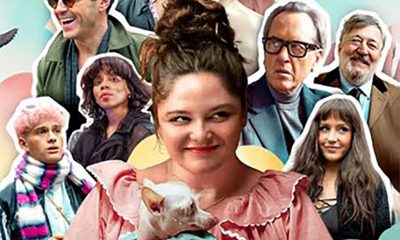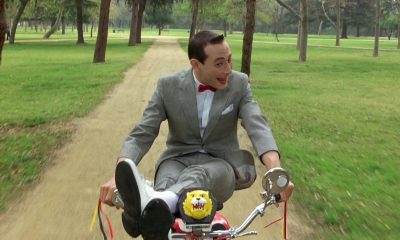Books
FALL ARTS 2016: ‘Looking’ for a good book?
Raising trans kids, Milwaukee’s gay history, queer Alaskan poets and more
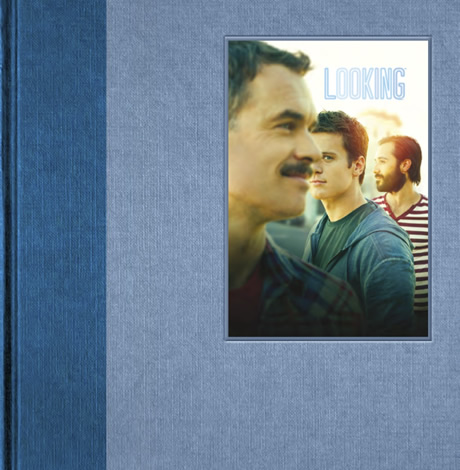
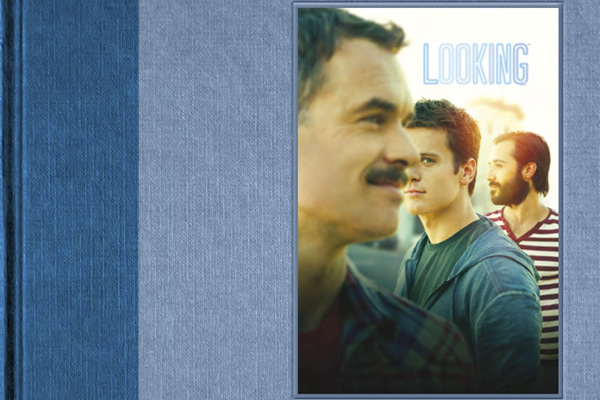
The ‘Looking’ coffeetable book features scenes from the memorable HBO series. (Photo courtesy First Third Books)
Before it was possible to Google terms like “gender creative,” Julie Tarney had to trust her instincts when her 2-year-old son Harry told her in 1992, “Inside my head I’m a girl.” “My Son Wears Heels: One Mom’s Journey from Clueless to Kickass” (out this week for $24.95) is Tarney’s story of unwavering support for her son by listening carefully, keeping an open mind, and putting Harry’s happiness before society’s edicts.
Originally chronicled in a serialized national column in the Guardian newspaper in the U.K., “Trans: A Memoir by Juliet Jacques” (out Nov. 15, $19.95) provides an insider’s insight into gender politics and how popular media is either ignoring or distorting the transgender movement. Jacques also provides a completely honest account of her sex reassignment surgery at the age of 30 and the journey to redefine her life for her family, her friends and herself.
“Before Pictures” by Douglas Crimp (out Sept. 22, $39) ticks all the boxes for anyone who has followed the long career of art critic Crimp, who famously coined the term “The Pictures Generation” in reference to the postmodern work of artists like Sherrie Levine and Cindy Sherman during the 1970s and ‘80s. The memoir follows his experiences as a young gay man in New York City in the 1960s, partying alongside the Warhol crowd, and eventually becoming an activist as AIDS began to devastate both the gay and arts communities.
Running parallel to Crimp’s memoir, “Life and Death on the New York Dance Floor, 1980-1983” by Tim Lawrence (out Sept. 30, $27.95) examines the intersection of New York City’s party and arts scenes in the early ‘80s, a world of intense creativity, risk and cultural crossover. Lawrence’s history outlines the convergence of disco, punk, hip hop, salsa and jazz with performance and visual art, video, film and fashion, all leading to the development of 21st century dance music.
Having “Looking” withdrawal now that the series and movie are over? Savor memories of the uber-gay HBO series with a coffeetable book of photos from the show. It’s out in October in two versions — one for $59 and another for $88 that features a DVD with interviews, behind-the-scenes footage from the movie and a signed cast photo. Jump fast if you’re interested — only 500 copies of each version are being issued. Details at firstthirdbooks.com.
While New York or San Francisco might seem like the epicenters of America’s gay rights movement, “LGBT Milwaukee (Images of Modern America)” by Michail Takach ($22.99) seeks to correct that notion, highlighting the history of gay and lesbian culture that was evolving in the Rust Belt city of Milwaukee from the early 1960s. As part of the Wisconsin LGBT History Project, the book’s 150 photographs with detailed captions focus on secret back room hangouts to mega-discos to drag queen culture.
“Becoming Who I Am: Young Men on Being Gay” (out Sept. 19; $27.95) is the result of extensive interviews with about 40 young gay men whose average age is 20. Author Ritch C. Savin-Williams explores their first inklings of same-sex attraction, first sexual experiences and their thoughts on love and long-term relationships.
Young Adult, or YA, fiction is the fastest-growing segment of the publishing market, continuing to offer sophisticated stories and viewpoints that are just as interesting for the over-18 reader. “You Know Me Well” by David Levithan and Nina LaCour ($18.99) is a coming-of-age story set in San Francisco during Pride Week, as two high school classmates, Mark and Kate, who have never spoken, suddenly run into each other one night in the city while avoiding the people they want to be with. Mark is struggling with his unrequited feelings for his best friend Ryan, while Kate is fearful of finally meeting the girl she’s loved from afar.
Tippi Hedren, one of the most famous Hitchcock blondes, releases her memoir “Tippi: a Memoir” ($28.99) on Nov. 1.
“Girl Mans Up” by M-E Girard (released this month, $17.99) is another YA title that will resonate as Pen tries to navigate a world where the cultural expectations from people around her, from her parents to her friends, make it difficult for her to simply be who she is — a girl who isn’t interested in looking feminine, has strong feelings for other girls, and, at the heart of it all, is still a girl at the end of the day who doesn’t want to pretend to be something she’s not.
“It Looks Like This” (out this month, $16.99) by debut author Rafi Mittlefehldt is a tale of first love and loss, following Mike as he and his family move to a new city and he starts at a new high school, constantly urged by his father to give up art for sports as he befriends new kid Sean. Ultimately hopeful, the story doesn’t shy away from the fear that compels parents to send their kids to “straight camp” or the bittersweet need for acceptance from the people we love.
Flynn’s girlfriend is missing, but that’s the least of his problems in “Last Seen Leaving” by Caleb Roehrig (Oct. 4; $17.99). This suspenseful mystery forces Flynn to confront his own demons while being scrutinized by cops and friends, with wit, grit and realism.
“Murder Ink” (Oct. 1; $14.99) is the first offering in the Dakota Jones, P.I. Mystery series, as Jones, the owner of Runaway Investigations, tries to spend a quiet holiday with her girlfriend Kris, a homicide officer, until Kris gets caught up in the investigation of the sordid murder of the proprietor of Fantasy Escorts, who Jones once worked for, back in the old days.
Alaska may, indeed, seem like another country, a place where people go to reinvent themselves in a fresh landscape, as evident in “Building Fires in the Snow: A Collection of Alaska LGBTQ Short Fiction and Poetry” (out this week, $29.95). The anthology gathers stories and poems from across the wide spectrum of Alaska’s LGBT community, shining a light on the everyday lives of gay and lesbian individuals and families within a historically diverse culture.
“The Sea Is Quiet Tonight: a Memoir” by Michael H. Ward (Nov. 1, $19.99) is, by turns, a painful reminder and inspiration tale of both the love and loss experienced by so many during the early years of the AIDS epidemic. Ward details his partner Mark’s diagnosis and death with honesty, delving into the closeness that can develop between partners, family and friends, even as death is imminent.
Using a collection of characters from pop culture, activism, and academia, “Queer: A Graphic History” by Meg-John Barker and Julia Scheele (Nov. 15, $17.95) uses the graphic novel to guide readers through the history of identity politics, queer theory and gender roles. Fresh interpretations and clever illustrations help bring new life to academic constructs and an understanding of the intersection of biology, psychology, and modern culture.
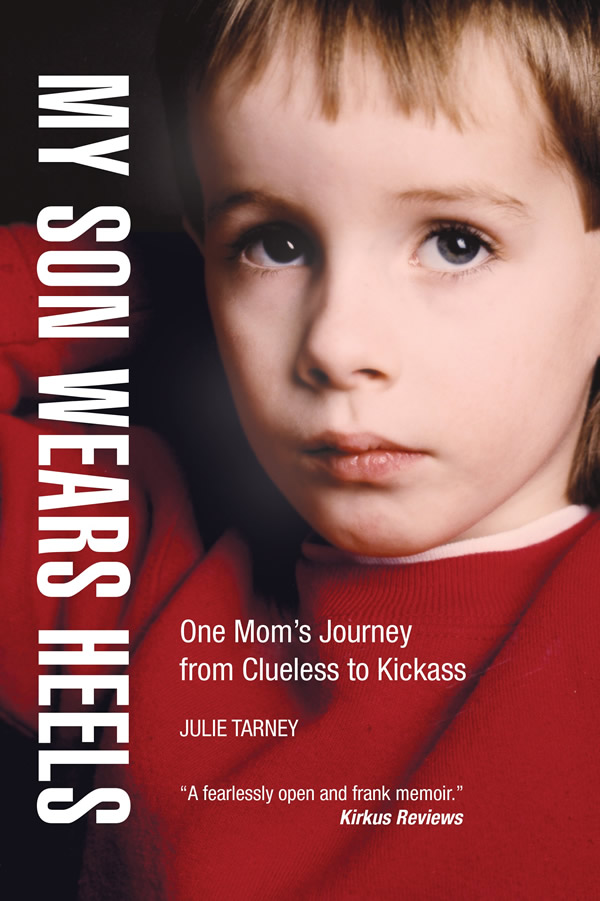
‘My Son Wears Heels’ by Julie Tarney tells of her experiences raising a gender non-conforming son. (Photo courtesy University of Wisconsin Press)

This past year, you’ve often had to make do.
Saving money here, resources there, being inventive and innovative. It’s a talent you’ve honed, but isn’t it time to have the best? Yep, so grab these Ten Best of 2025 books for your new year pleasures.
Nonfiction
Health care is on everyone’s mind now, and “A Living: Working-Class Americans Talk to Their Doctor” by Michael D. Stein, M.D. (Melville House, $26.99) lets you peek into health care from the point of view of a doctor who treats “front-line workers” and those who experience poverty and homelessness. It’s shocking, an eye-opening book, a skinny, quick-to-read one that needs to be read now.
If you’ve been doing eldercare or caring for any loved one, then “How to Lose Your Mother: A Daughter’s Memoir” by Molly Jong-Fast (Viking, $28) needs to be in your plans for the coming year. It’s a memoir, but also a biography of Jong-Fast’s mother, Erica Jong, and the story of love, illness, and living through the chaos of serious disease with humor and grace. You’ll like this book especially if you were a fan of the author’s late mother.
Another memoir you can’t miss this year is “Between the Devil and the Deep Blue Sea: A Veteran’s Memoir” by Khadijah Queen (Legacy Lit, $30.00). It’s the story of one woman’s determination to get out of poverty and get an education, and to keep her head above water while she goes below water by joining the U.S. Navy. This is a story that will keep you glued to your seat, all the way through.
Self-improvement is something you might think about tackling in the new year, and “Replaceable You: Adventures in Human Anatomy” by Mary Roach (W.W. Norton & Company, $28.99) is a lighthearted – yet real and informative – look at the things inside and outside your body that can be replaced or changed. New nose job? Transplant, new dental work? Learn how you can become the Bionic Person in real life, and laugh while you’re doing it.
The science lover inside you will want to read “The Grave Robber: The Biggest Stolen Artifacts Case in FBI History and the Bureau’s Quest to Set Things Right” by Tim Carpenter (Harper Horizon, $29.99). A history lover will also want it, as will anyone with a craving for true crime, memoir, FBI procedural books, and travel books. It’s the story of a man who spent his life stealing objects from graves around the world, and an FBI agent’s obsession with securing the objects and returning them. It’s a fascinating read, with just a little bit of gruesome thrown in for fun.
Fiction
Speaking of a little bit of scariness, “Don’t Forget Me, Little Bessie” by James Lee Burke (Atlantic Monthly Press, $28) is the story of a girl named Bessie and her involvement with a cloven-hooved being who dogs her all her life. Set in still-wild south Texas, it’s a little bit western, part paranormal, and completely full of enjoyment.
“Evensong” by Stewart O’Nan (Atlantic Monthly Press, $28) is a layered novel of women’s friendships as they age together and support one another. The characters are warm and funny, there are a few times when your heart will sit in your throat, and you won’t be sorry you read it. It’s just plain irresistible.
If you need a dark tale for what’s left of a dark winter season, then “One of Us” by Dan Chaon (Henry Holt, $28), it it. It’s the story of twins who become orphaned when their Mama dies, ending up with a man who owns a traveling freak show, and who promises to care for them. But they can’t ever forget that a nefarious con man is looking for them; those kids can talk to one another without saying a word, and he’s going to make lots of money off them. This is a sharp, clever novel that fans of the “circus” genre shouldn’t miss.
“When the Harvest Comes” by Denne Michele Norris (Random House, $28) is a wonderful romance, a boy-meets-boy with a little spice and a lot of strife. Davis loves Everett but as their wedding day draws near, doubts begin to creep in. There’s homophobia on both sides of their families, and no small amount of racism. Beware that there’s some light explicitness in this book, but if you love a good love story, you’ll love this.
Another layered tale you’ll enjoy is “The Elements” by John Boyne (Henry Holt, $29.99), a twisty bunch of short stories that connect in a series of arcs that begin on an island near Dublin. It’s about love, death, revenge, and horror, a little like The Twilight Zone, but without the paranormal. You won’t want to put down, so be warned.
If you need more ideas, head to your local library or bookstore and ask the staff there for their favorite reads of 2025. They’ll fill your book bag and your new year with goodness.
Season’s readings!
The Blade may receive commissions from qualifying purchases made via this post.
Books
This gay author sees dead people

‘Are You There Spirit? It’s Me, Travis’
By Travis Holp
c.2025, Spiegel and Grau
$28/240 pages
Your dad sent you a penny the other day, minted in his birth year.
They say pennies from heaven are a sign of some sort, and that makes sense: You’ve been thinking about him a lot lately. Some might scoff, but the idea that a lost loved one is trying to tell you he’s OK is comforting. So read the new book, “Are You There, Spirit? It’s Me, Travis” by Travis Holp, and keep your eyes open.

Ever since he was a young boy growing up just outside Dayton, Ohio, Travis Holp wanted to be a writer. He also wanted to say that he was gay but his conservative parents believed his gayness was some sort of phase. That, and bullying made him hide who he was.
He also had to hide his nascent ability to communicate with people who had died, through an entity he calls “Spirit.” Eventually, though it left him with psychological scars and a drinking problem he’s since overcome, Holp was finally able to talk about his gayness and reveal his otherworldly ability.
Getting some people to believe that he speaks to the dead is still a tall order. Spirit helps naysayers, as well as Holp himself.
Spirit, he says, isn’t a person or an essence; Spirit is love. Spirit is a conduit of healing and energy, speaking through Holp in symbolic messages, feelings, and through synchronistic events. For example, Holp says coincidences are not coincidental; they’re ways for loved ones to convey messages of healing and energy.
To tap into your own healing Spirit, Holp says to trust yourself when you think you’ve received a healing message. Ignore your ego, but listen to your inner voice. Remember that Spirit won’t work on any fixed timeline, and its only purpose is to exist.
And keep in mind that “anything is possible because you are an unlimited being.”
You’re going to want very much to like “Are You There, Spirit? It’s Me, Travis.” The cover photo of author Travis Holp will make you smile. Alas, what you’ll find in here is hard to read, not due to content but for lack of focus.
What’s inside this book is scattered and repetitious. Love, energy, healing, faith, and fear are words that are used often – so often, in fact, that many pages feel like they’ve been recycled, or like you’ve entered a time warp that moves you backward, page-wise. Yes, there are uplifting accounts of readings that Holp has done with clients here, and they’re exciting but there are too few of them. When you find them, you’ll love them. They may make you cry. They’re exactly what you need, if you grieve. Just not enough.
This isn’t a terrible book, but its audience might be narrow. It absolutely needs more stories, less sentiment; more tales, less transcendence and if that’s your aim, go elsewhere. But if your soul cries for comfort after loss, “Are You There, Spirit? It’s Me, Travis” might still make sense.
The Blade may receive commissions from qualifying purchases made via this post.
Books
‘Dogs of Venice’ looks at love lost and rediscovered
A solo holiday trip to Italy takes unexpected turn

‘The Dogs of Venice’
By Steven Crowley
c.2025, G.P. Putnam & Sons
$20/65 pages
One person.
Two, 12, 20, you can still feel alone in a crowded room if it’s a place you don’t want to be. People say, though, that that’s no way to do the holidays; you’re supposed to Make Merry, even when your heart’s not in it. You’re supposed to feel happy, no matter what – even when, as in “The Dogs of Venice” by Steven Rowley, the Christmas tinsel seems tarnished.

Right up until the plane door closed, Paul held hope that Darren would decide to come on the vacation they’d planned for and saved for, for months.
Alas, Darren was a no-show, which was not really a surprise. Three weeks before the departure, he’d announced that their marriage wasn’t working for him anymore, and that he wanted a divorce. Paul had said he was going on the vacation anyhow. Why waste a perfectly good flight, or an already-booked B&B? He was going to Venice.
Darren just rolled his eyes.
Was that a metaphor for their entire marriage? Darren had always accused Paul of wanting too much. He indicated now that he felt stifled. Still, Darren’s unhappiness hit Paul broadside and so there was Paul, alone in a romantic Italian city, fighting with an espresso machine in a loft owned by someone who looked like a frozen-food spokeswoman.
He couldn’t speak or understand Italian very well. He didn’t know his way around, and he got lost often. But he felt anchored by a dog.
The dog – he liked to call it his dog – was a random stray, like so many others wandering around Venice unleashed, but this dog’s confidence and insouciant manner inspired Paul. If a dog could be like that, well, why couldn’t he?
He knew he wasn’t unlovable but solo holidays stunk and he hated his situation. Maybe the dog had a lesson to teach him: could you live a wonderful life without someone to watch out for, pet, and care for you?
Pick up “The Dogs of Venice,” and you might think to yourself that it won’t take long to read. At under 100 pages, you’d be right – which just gives you time to turn around and read it again. Because you’ll want to.
In the same way that you poke your tongue at a sore tooth, author Steven Rowley makes you want to remember what it’s like to be the victim of a dead romance. You can do it here safely because you simply know that Paul is too nice for it to last too long. No spoilers, though, except to say that this novel is about love – gone, resurrected, misdirected – and it unfolds in exactly the way you hope it will. All in a neat evening’s worth of reading. Perfect.
One thing to note: the Christmas setting is incidental and could just as well be any season, which means that this book is timely, no matter when you want it. So grab “The Dogs of Venice,” enjoy it twice with your book group, with your love, or read it alone.
The Blade may receive commissions from qualifying purchases made via this post.

